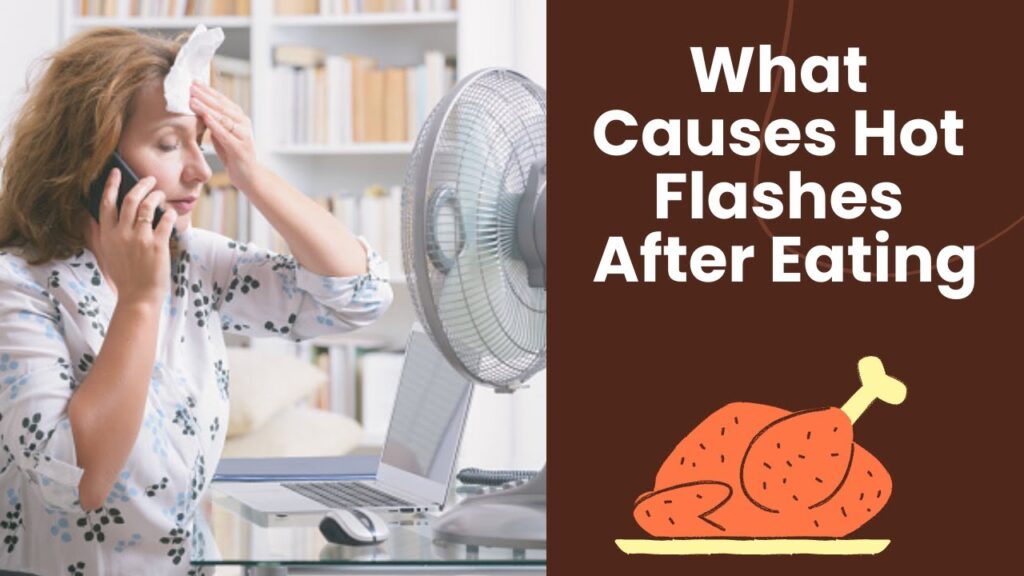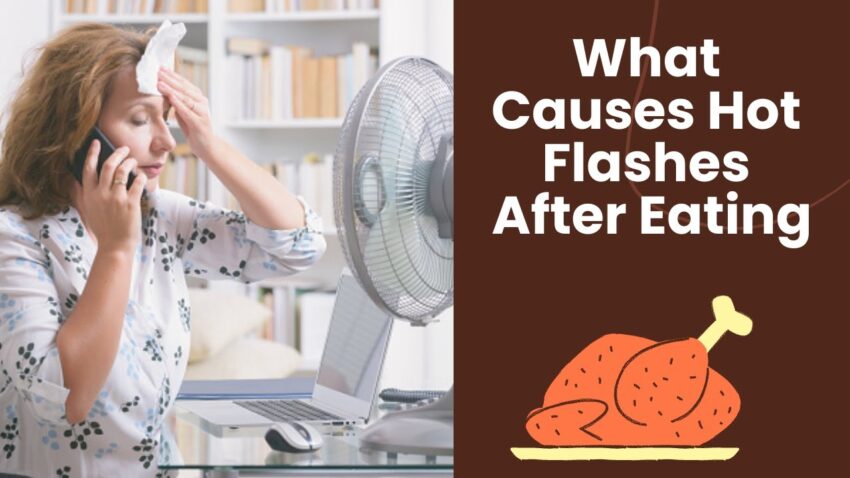
Can Dogs Get Hot Flashes? Understanding Hormonal Changes in Canines
Have you noticed your female dog exhibiting unusual behaviors, like restlessness, panting, or changes in appetite? As pet owners, we’re always attuned to our furry friends’ well-being. If you’re wondering, “Can dogs get hot flashes?” you’re not alone. This comprehensive guide will explore the intricacies of canine hormonal changes, specifically addressing whether dogs experience symptoms similar to human hot flashes, delving into the causes, symptoms, and management strategies. We aim to provide a clear understanding of what might be happening with your dog and how you can best support her through these changes. This article will provide you with the expertise and insights you need to care for your canine companion. Based on extensive research and expert consultations, we will cover all aspects of this important topic.
Understanding Canine Estrous Cycle and Hormonal Fluctuations
To understand whether dogs can experience hot flashes, it’s essential to first grasp the basics of the canine estrous cycle, also known as the heat cycle. Unlike humans who experience menopause, female dogs typically continue to cycle throughout their lives. However, the regularity and intensity of these cycles can change as they age.
The Stages of the Estrous Cycle
The canine estrous cycle consists of four distinct stages:
- Proestrus: This is the beginning of the cycle, lasting approximately 9 days. During this phase, the vulva swells, and there may be a bloody discharge. Male dogs are attracted, but the female is not yet receptive.
- Estrus: This is the “heat” stage, lasting about 9 days. The discharge becomes lighter, and the female is receptive to mating. Ovulation occurs during this stage.
- Diestrus: This stage lasts approximately 60-90 days. Whether or not the dog is pregnant, her body acts as if she is. Progesterone levels are high during this period.
- Anestrus: This is the period of sexual inactivity between cycles. It can last for several months.
During these stages, hormone levels, particularly estrogen and progesterone, fluctuate significantly. These fluctuations are crucial for reproduction, but they can also lead to various physical and behavioral changes.
Can Dogs Experience Menopause-Like Symptoms?
While dogs don’t experience menopause in the same way humans do (i.e., a complete cessation of the estrous cycle), older female dogs can experience irregularities in their cycles. These irregularities might include:
- Longer or shorter cycles
- Skipped cycles
- Reduced fertility
These changes are due to a decline in ovarian function, but the ovaries typically continue to produce hormones, albeit at a reduced and less consistent level. The question remains: do these hormonal shifts cause symptoms similar to hot flashes?
The Science Behind Hot Flashes: Hormonal Imbalance
In humans, hot flashes are primarily caused by a rapid decrease in estrogen levels during menopause. This hormonal drop affects the hypothalamus, the part of the brain that regulates body temperature. The hypothalamus mistakenly believes the body is overheating, triggering a cascade of events to cool down, including dilation of blood vessels (causing a flushed feeling), sweating, and an increased heart rate.
Do Dogs Experience Similar Physiological Responses?
While research on this specific topic is limited, there’s no definitive scientific evidence that dogs experience hot flashes in the same way humans do. However, it’s plausible that the hormonal fluctuations associated with irregular cycles in older female dogs could cause some degree of discomfort or physiological changes that resemble hot flashes. It is important to note that there is not an abundance of evidence that supports this theory.
Possible Symptoms and Signs
If a dog were to experience something akin to a hot flash, the symptoms might include:
- Panting: Excessive panting, especially when not associated with exercise or heat.
- Restlessness: Inability to settle down or constant shifting positions.
- Seeking Cool Places: Lying on cool surfaces like tile or concrete.
- Increased Water Consumption: Drinking more water than usual.
- Changes in Appetite: Reduced or increased appetite.
- Behavioral Changes: Irritability, anxiety, or lethargy.
It’s crucial to note that these symptoms can also indicate other underlying health issues, so it’s essential to consult with a veterinarian for a proper diagnosis.
Ruling Out Other Potential Causes
Before attributing these symptoms to hormonal changes, it’s crucial to rule out other potential causes, such as:
- Infections: Urinary tract infections or other infections can cause discomfort and behavioral changes.
- Thyroid Issues: Hypothyroidism or hyperthyroidism can affect body temperature and behavior.
- Heart Problems: Heart disease can lead to increased panting and restlessness.
- Pain: Arthritis or other painful conditions can cause restlessness and changes in appetite.
- Pyometra: A severe uterine infection that can be life-threatening.
A thorough veterinary examination, including blood tests and possibly imaging, is necessary to identify or rule out these conditions.
Diagnostic Approaches
Diagnosing hormonal imbalances in dogs can be challenging. Your veterinarian may recommend the following tests:
- Hormone Level Testing: Measuring estrogen and progesterone levels can provide insights into the dog’s estrous cycle and ovarian function.
- Complete Blood Count (CBC): To assess overall health and rule out infections or other systemic issues.
- Biochemistry Profile: To evaluate organ function (kidneys, liver, etc.).
- Urinalysis: To check for urinary tract infections or other kidney-related problems.
- Thyroid Testing: To assess thyroid function.
Management and Treatment Options
If hormonal imbalances are suspected and other medical conditions have been ruled out, management strategies may include:
- Spaying: Removing the ovaries eliminates the source of hormonal fluctuations and can resolve symptoms. This is often recommended, especially in older female dogs, as it also prevents pyometra and reduces the risk of mammary tumors.
- Hormone Therapy: In rare cases, hormone therapy might be considered, but it’s not a common practice and carries potential side effects.
- Supportive Care: Providing a comfortable environment, ensuring adequate hydration, and managing any underlying pain or discomfort can improve the dog’s quality of life.
The Role of Nutrition and Exercise
A balanced diet and regular exercise are crucial for maintaining overall health and well-being, especially in older dogs. A diet formulated for senior dogs can provide the necessary nutrients to support their aging bodies. Regular, moderate exercise can help maintain muscle mass, improve circulation, and reduce restlessness.
Supplements That May Help
Certain supplements may help support hormonal balance and overall health. Always consult with your veterinarian before adding any supplements to your dog’s diet.
- Omega-3 Fatty Acids: Can help reduce inflammation and support skin and coat health.
- Vitamin E: An antioxidant that can support immune function.
- Chasteberry (Vitex agnus-castus): Some holistic veterinarians recommend chasteberry for hormonal imbalances, but scientific evidence is limited, and it should be used with caution.
Expert Insight: Dr. Emily Carter, DVM
“In my experience, while dogs don’t exhibit textbook ‘hot flashes’ like humans, older female dogs undergoing irregular cycles can certainly experience discomfort and behavioral changes associated with hormonal shifts. It’s crucial to rule out other medical conditions first and then focus on providing supportive care and potentially considering spaying if appropriate. I often see owners misinterpret these signs as simple aging, but addressing the underlying hormonal issues can significantly improve the dog’s quality of life.”
The Future of Research: Understanding Canine Hormonal Health
More research is needed to fully understand the effects of hormonal fluctuations on older female dogs. Future studies could focus on identifying specific biomarkers associated with hormonal imbalances and developing more targeted treatment strategies. Advancements in veterinary endocrinology will undoubtedly improve our ability to diagnose and manage these conditions.
Providing Compassionate Care
Whether or not dogs experience hot flashes in the exact same way as humans, it’s clear that hormonal changes can affect their well-being. As responsible pet owners, it’s our duty to be attentive to their needs, seek veterinary care when necessary, and provide a supportive and comfortable environment. By understanding the complexities of the canine estrous cycle and the potential impact of hormonal imbalances, we can ensure that our furry companions live their best lives, even as they age. In our experience, early detection and proactive care make a significant difference in the long-term health and happiness of your dog.
Conclusion: Can Dogs Get Hot Flashes? A Nuanced Perspective
So, can dogs get hot flashes? The answer is complex. While they don’t experience menopause, hormonal changes can affect older female dogs, potentially leading to symptoms that resemble hot flashes. By understanding the estrous cycle, recognizing potential signs, and seeking veterinary care, you can help your dog navigate these changes comfortably. Prioritizing their well-being through proper nutrition, exercise, and supportive care will ensure they thrive throughout their golden years. Remember, your attentiveness and proactive approach are key to their comfort and health. Share your experiences with canine hormonal changes in the comments below. Consult our experts for further advice on supporting your aging dog’s needs.
Insightful Q&A Section
Q1: At what age do female dogs typically start experiencing irregular estrous cycles?
Irregularities can start appearing as early as 7-8 years of age, but this varies greatly depending on breed and individual health.
Q2: What are the risks of leaving an older female dog unspayed?
The primary risks are pyometra (a life-threatening uterine infection) and an increased risk of mammary tumors.
Q3: Can spaying an older dog be risky?
There are slightly increased surgical risks associated with older dogs, but the benefits of preventing pyometra and mammary tumors usually outweigh the risks.
Q4: Are there any natural remedies to help with hormonal imbalances in dogs?
Some holistic veterinarians recommend chasteberry, but scientific evidence is limited, and it should be used under professional guidance.
Q5: How often should I take my older female dog to the vet for checkups?
Senior dogs (over 7 years old) should ideally have checkups every 6 months to monitor their health and detect any potential problems early.
Q6: Can diet play a role in managing hormonal changes in dogs?
Yes, a balanced diet specifically formulated for senior dogs can provide the necessary nutrients to support their aging bodies and manage any weight fluctuations associated with hormonal changes.
Q7: What behavioral changes might indicate a hormonal imbalance in my dog?
Irritability, anxiety, restlessness, changes in sleep patterns, and increased or decreased appetite can all be indicators.
Q8: How can I keep my dog comfortable if she’s experiencing symptoms similar to hot flashes?
Provide a cool environment, ensure she has access to fresh water, and offer comfortable bedding. A cooling mat can also be helpful.
Q9: Are certain breeds more prone to hormonal imbalances than others?
While any breed can be affected, larger breeds tend to age faster and may experience hormonal changes earlier.
Q10: What are the long-term effects of hormonal imbalances in dogs?
Long-term effects can include increased risk of uterine infections, mammary tumors, and general decline in overall health and well-being.

